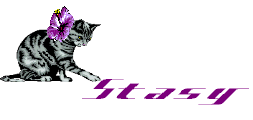


HOTEL HOTEL: The Sad Sea (CD on Silber Records)
This CD from 2008 offers 44 minutes of moody ambience.
Hotel Hotel is P.D. Wilder and Patrick Patterson, with an assortment of guests on violins and guitars.
Clouds of violins and guitars are heavily processed to achieve a moody ambience.
After being subjected to extreme treatments, these layers of strings generate a haunting disposition, one wrought with a distinctly intentional edginess. The drones drift and billow with a lassitude that evokes a downbeat despondency, suitably capturing the feeling of being lost at sea. The sounds grind against each other, not in contention but allied to escalate an ambient mien into a searing intensity as the harmonics attain a teeth-rattling pitch. At times, the guitars cast off their mutated facade and resonate with traditional notes of an endearing demeanor.
Drums are present in some tracks, contributing lazy, almost hesitant rhythms. While possessing a rock sensibility, this percussion is buried in the mix so as to generate a remote vantage, further enhancing the mood of lost hope.
There are frequent instances of harsh intensity as the blending layers reach recurrent pinnacles, rising from droney definition to flourish as blinding passages of white light.
Keyboards are utilized too, usually manifesting as somber piano mirroring the musicís overall sadness.
These compositions excellently communicate a sense of detachment and alienation, plunging the listener into the position of an aimless ocean voyage going nowhere.

CHRISTOPHER ROBERTS: Trios for Deep Voices (CD on Cold Blue Music)
This CD from 2009 offers 37 minutes of cerebral classical music.
Roberts is accompanied by Mark Morton and James Bergman; all three play double bass.
The musicians derive an assortment of sonic expressions from the double bass: sawing bows (both feverish and somber), screeching strokes and floating chords. The interplay of the instruments generates a lavishly classical air of deeply resonant character, pulsating and evocative.
While main themes are established, a series of subtle melodies are produced beneath the surface, carefree tunes that compliment the focal harmonics. Speed and agility both contribute to make this lively music heartfelt in its dedication, adept in its interdependent gymnastics. Complexity is adroitly generated as the various basses interweave their notes to produce a delightful depth.
Plucking strings add additional punctuation to the sawing tuneage, attributing a sense of rhythm to the flowing melodies.
These compositions display a unique quality, unifying a modern approach with the traditional influences of the tribes of Papau New Guinea and resulting in an exotic flavor that is bewitching and highly engaging.

THOMAS RYDELL ENSEMBLE: Kvallstoner (CD on Thomas Rydell Music)
This release from 2008 offers 57 minutes of placid tuneage.
Rydell (who plays guitar and loop effects) is joined on these live performances by: Mirjam Hubinette (on flute), Bjorn Hultsten (on clarinet), Svante Paulsson (on recorder), Gustav Silvegren and David Ehrlin (on soprano saxophone), Marie Hjorter (on cello), and Asa Karlberg (on flute).
Track one was recorded live at Fors Kyrka Eskilstuna on October 12, 2007. At 38 minutes long, this piece occupies the bulk of this release. Placid guitar notes drift in a medium of sedate horns and winsome woodwinds, pursuing a melody of calm disposition as the instruments combine to establish an orchestra panorama of minimal definition. Cello provides a moody undercurrent. The pace is unhurried, almost lethargic, as the melody progresses. The music is almost ambient in its sparse scope, utilizing airy passages to achieve a distinctly nocturnal mood of introspection. After a while, the guitar becomes immersed in the orchestral softness, contributing from a subliminal vantage. As the horns grow more mournful, the woodwinds adopt more whimsical expressions. A choir enters the mix, lending a celestial aspect to the performance that effectively balances the music modern flair with a traditional compliment.
Track two is live from Strangnas Domkyrka on May 5, 2007. It is 8 minutes long. While similar in instrumentation, this piece has a more uplifting feeling than the prior composition, as the horns strive for altitude while the woodwinds establish a pastoral foundation. There are instances when a subtle jazz influence creeps into the flow.
The last track is live at Ugglans Park Strangnas on May 10, 2008. It is 11 minutes long. Here, the woodwinds adopt a more sprightly demeanor. The guitar chords emerge to play an equal role, enhancing the soothingly energized mien of the material.
Overall, a tasty dose of often understated modern classical music devoted to capturing a sonic twilight.

| Entire page © 2009 Matt Howarth. All rights reserved. |
Webpage design by
 |